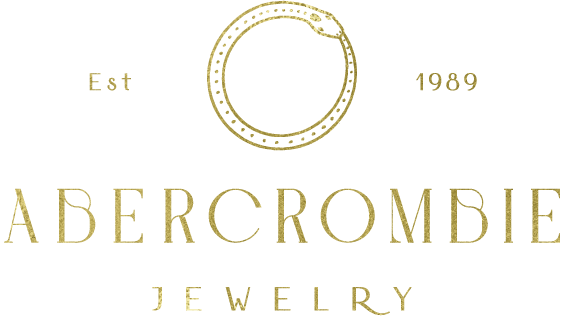Diamonds have been a symbol of love, commitment, and wealth for centuries. But are diamond rings worth the cost? This article will explore the history of diamonds as a status symbol and analyze whether they are still worth it in today’s economy.
The modern diamond industry was built on De Beers’ “A Diamond is Forever” advertising campaign in 1938, which created demand by making diamonds essential to an engagement proposal. The advent of ethical consumerism has spurred inquiries into the ethicality of investing substantial sums of money in items that lack inherent value. Is there an alternative means of expressing affection besides purchasing costly jewelry?
Is A Diamond Ring An Investment?
When investing in jewelry, a diamond ring is often the first thought. But is a diamond an investment? The issue has been the subject of extensive and prolonged discourse, with each faction presenting persuasive arguments.
On one hand, diamonds have long been seen as symbols of wealth and status – they are durable and don’t depreciate over time as other investments might. However, when it comes to reselling them later on down the line, significant fees can be associated with doing so that eat away at any potential return you may receive. Additionally, because diamonds are not traded on public markets, their pricing structure can be hard to gauge accurately, which could lead to making poor decisions when investing your money into them.
Furthermore, since jewelers set most prices based on quality rather than the actual market value, it’s challenging to determine precisely how much money you’ll make back from selling your diamond rings if you decide to do so in the future. It is essential that before making this kind of purchase, you understand all aspects related to reselling, such as insurance costs or taxes due upon sale, before committing yourself financially.
Ultimately, diamonds may offer particular advantages over other types of investments, but they also come with risks attached; these should always be carefully considered before making a purchase decision.
The Pros and Cons Of Buying A Diamond Ring
Purchasing a diamond ring can be a meaningful way to celebrate an occasion, but it’s essential to consider the pros and cons before making such a significant purchase. On one hand, buying this type of jewelry has some positive aspects. For instance, diamond rings often have sentimental value lasting for generations and represent relationship commitment. They also tend to increase in value over time due to their rarity and beauty.
Conversely, there exist various disadvantages correlated with the procurement of diamond rings. For example, they are usually expensive and may not fit everyone’s budget. Additionally, diamonds don’t always appreciate like many assume, so buyers must research beforehand to make the right choice when selecting their stone. Furthermore, diamonds require special care, or else they will lose their sparkle over time which could lead to costly repairs or replacements down the road.
Given these considerations, potential buyers of diamond rings need to weigh both sides carefully before committing financially. After all, is said and done, though, if someone decides that a traditional diamond isn’t right for them, there are plenty of alternatives, ranging from lab-grown stones to colored sapphires that offer similar aesthetic appeal at more affordable prices.
Alternatives To Traditional Diamond Rings
When identifying the most impeccable present for a cherished individual, a diamond ring is frequently viewed as the conventional option. However, given the profusion of viable substitutes, examining the array of alternatives at one’s disposal is judicious. From sapphires and rubies to moissanite and lab-grown diamonds, plenty of options can be just as meaningful – without breaking the bank.
One popular alternative to traditional diamond rings is choosing gemstones instead. Sapphires and rubies are two of the most sought-after stones due to their beauty and durability, making them an excellent option for those who want something different from a classic diamond. These precious gems come in all colors; you’re sure to find one that perfectly matches your special someone’s style and taste.
Another great option is moissanite or lab-grown diamonds. Both offer beautiful sparkles at a fraction of the cost compared to natural diamonds – plus, they have less environmental impact since they don’t require mining or other extraction processes like natural stones do. Moissanite has become increasingly popular due to its hardness rating (second only to diamond). Lab-grown diamonds have the same chemical composition as mined ones but have no ethical implications.
No matter which type of stone you choose for your special someone, make sure you take time to research each option carefully before deciding on one. Consider budget constraints and personal preferences; not everyone likes big flashy rings, even if they’re made from expensive materials! Considering all these factors will help you pick something unique that’ll last forever.
Before finalizing any purchase decisions, it is imperative to thoroughly evaluate the advantages and drawbacks of procuring a diamond ring. On one hand, a diamond ring can be an emotional purchase that symbolizes love and commitment. Conversely, the perceived economic value of a diamond ring may need to align with the priorities of specific individuals. In such cases, alternative options, including lab-created diamonds and gemstone jewelry, exist as viable alternatives to traditional diamond rings.
If you want to buy a diamond ring as an investment or just because you think it’s beautiful and meaningful, then go ahead! But if you’re looking for something more affordable but memorable, consider alternative options like lab-created diamonds or gemstones. They can often provide the same sparkle without breaking your bank account.
Ultimately, what matters most in purchasing a diamond ring—or any type of jewelry—is whether it fits your budget and has sentimental value.
